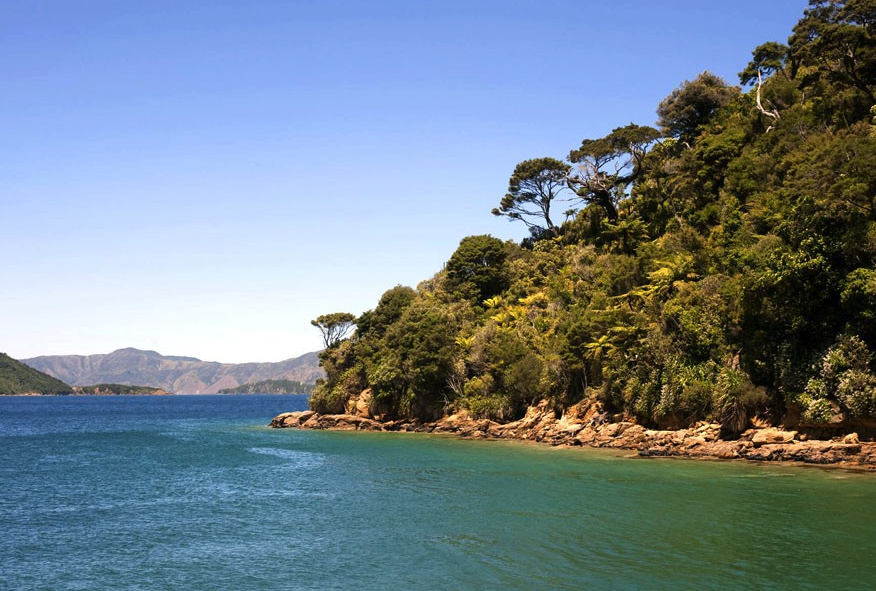By Wayne Mayer
Lou Sanson, conservator for the Southland Conservancy of the Sub-Antarctic Islands of New Zealand, oversees national parks and wildlife management for New Zealand. Sanson and his staff of 100 take action to preserve and maintain the native plant and animal species, ecosystems, and environments of the islands and “allow for tourism, provided that wildlife is protected.” For the last four years as conservator and for twelve years before that as operations manager responsible for Sub-Antarctic Islands, Sanson, 42, feels at home on the remote reaches of “way down under.” His goals mesh with his life-long passion for the wild spaces and animals of the five Sub-Antarctic island groups isolated in the Southern Ocean and South Pacific Ocean.
Rarely does a smattering of islands in cold ocean waters open your mind and refresh your soul. Rarely does UNESCO declare such a place a World Heritage Area. But New Zealand’s Sub-Antarctic Islands and the oceans around them stand out as the last relatively untarnished, safe places for myriad species endemic to the Earth’s southern outposts. “On the islands,” Sanson says, “nature is in control. Every time Man has intervened, the natural environment has won out. Wildlife reigns. Some of the world’s rarest plants and birds thrive on the islands. Everything from royal albatrosses and tussocks (big, tuft-forming grasses) to southern elephant seals, leopard seals, southern right whales, starfish, great white sharks, and penguins like rockhopper penguins, yellow-eyed penguins, and erect-crested penguins find niches throughout the islands.”
“There are mega-herbs, mate,” he continues, with a knot of excitement in his voice, “and the royal albatross is the largest seabird in the world. Plus the twisted trunks of rata trees, covered by mosses and entangled in forests, give places like the Auckland Islands a gnome-like look right out of J. R.R. Tolkien’s The Hobbit.”
Grasslands cover most of the islands, but even these grasses and flowers make up a delicate balance of life on these geographically separated islands of largely volcanic rock. Ongoing marine erosion has carved, chiseled, and shaped otherworldly stacks, arches, and great cliffs into all of the islands’ edges, adding to their fantasy-world appearance. Visitors inevitably fall under the spell of the distinctive island vegetation, land forms, and wild fauna.
There are only three tour companies operating in the Sub-Antarctic, “and we’re impressed with them all,” says Sanson. The New Zealand government appreciates the operators’ commitment to conservation. “Let’s not overdo tourism,” Sanson cautions. “Let’s treat the islands like their value is paramount.” New Zealand permits tourism on the Sub-Antarctic Islands provided it doesn’t pose a threat to their unique qualities. “Small ships are the only way to go,” says Sanson. The largest vessels allowed by law in the archipelagos carry a maximum of 200 passengers. Even so, the impact of shuttling visitors ashore may threaten life forms in the islands’ intricate web of life, so visitors must exercise care.
“We must manage the islands carefully to ensure the protection of these fragile ecosystems,” emphasizes Sanson. The government established a visitor limit on the Sub-Antarctic Islands; only 600 tourists may visit the islands each year. “It’s a privilege to visit the islands,” Sanson states, “and the experience is amazing.”
Footnote:
When not surveying animals among New Zealand’s Sub-Antarctic Islands, Lou Sanson lives in Invercargill, New Zealand. He spends a lot of time climbing, ski-touring, tramping, and taking photographs in the mountains of New Zealand. Many of his pictures illustrate Reed Books’ New Zealand’s Sub-Antarctic Islands. Sanson, who holds a Bachelor of Forestry Science from Canterbury University, writes and lectures widely about the importance of the Sub-Antarctic Islands. His articles appear in the Annals of Tourism Research and in Conservation of Sub-Antarctic Islands. To learn more about the islands, visit www.doc.govt.nz.
